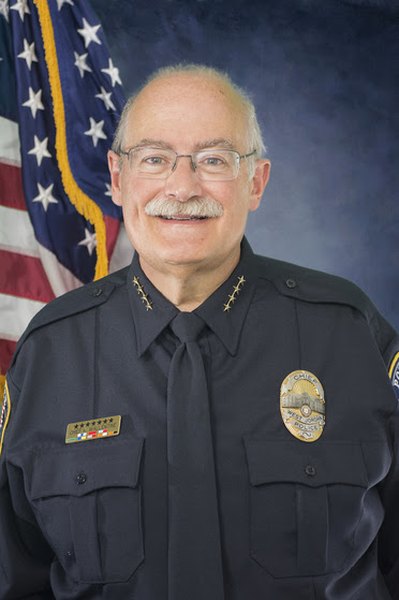Traditionally, America's police have met the mission to protect and to serve by responding to almost any call, including the call to intervene in a suicide threat. When a distressed person calls a family member to inform them that he is about to take their own life, the relative often calls the police next. When police arrive, the despondent person shouts at the officers to leave him alone.
Police officers are the default first response to mental health crises of suicidal persons. But is this really a police matter—or a risk that should be shifted to mental health services, or even allowed to play out without any emergency intervention? Is the call truly an emergency, or is there time to seek a warrant, or perhaps a court order for mental health evaluation?
In a much-noticed decision out of the Fourth Circuit a few years ago, one judge astutely noted that when responding to non-criminal mental health incidents, officers can simply choose to do nothing—and that legally, this might be the safest option. Judge Wilkinson wrote, “law enforcement will learn soon enough that sins of omission are generally not actionable.”
Officers feel like they have to do something. After all, the motto on the back of the patrol car says, “to serve and protect.” At the same time, officers know that suicidal subjects may quickly become homicidal subjects and pose a great threat to the officers. What is the proper police role?
Many public safety agencies are training officers in the concept of tactical repositioning, or as some call it, tactical withdrawal, in suicide threat calls. Others are choosing to not respond when there is no apparent threat to other persons.
No matter what approach the agency prescribes, officers (particularly first line supervisors) should be educated on some basic risk management principles common to suicide threat calls. First, teach officers about the “public duty doctrine,” which provides that the police have a general duty to all citizens, but no particular duty to any one citizen. Second, educate officers that undertaking certain action can create a special relationship with an individual citizen and void the protection of the public duty doctrine.
If the agency chooses a philosophy of responding, assessing the threat and tactical repositioning, what does that look like? How is that different than doing nothing and just walking away? Tactical repositioning implies tactical thinking and decision-making. Responding officers are not doing nothing—they’re choosing to take the action that reasonably appears to be the least risky based on an analysis of the situation.
Beyond not creating a legal duty and invalidating the potential protection of the public duty doctrine, what steps should officers take? First, if family or friends are present, officers should provide numbers and information for mental health referrals. If there are no friends or family on scene, the officers might consider leaving pamphlets listing resources for the subject. Second, the officers should explain the police response to family members or bystanders. Officers should caution them about the risks of engaging the person threatening suicide. Invite them to call 911 if conditions change or if they have further cause to worry.
Finally, recognize that the subject may harm himself after police leave. That’s simply the harsh truth. Also, officers simply must not make promises that they can't keep or statements that may not be true.
The final consideration in responding to suicidal subjects is how officers document the response. If legal action does arise out of the incident, the police report will be one of the key pieces of information analyzed. It’s important that officers not only document precisely the situation they faced and the action they took, but also why. They should document the analysis they went through to arrive at the response decisions. If officers forced entry without a warrant, the reports must explain why officers believed those actions were justified from a legal and safety standpoint. If officers used force, what were they expecting to accomplish?
If the responding officers chose tactical repositioning, they should carefully document how a Priority of Life analysis led them to believe this was the safest action for the public, the officers and the suicidal subject. In addition to explaining what force wasn’t used and what seizure didn’t happen, the officers should explain what actions they took to help the subject and explain the situation to family members.
*The views and opinions expressed in the Public Risk Management Association (PRIMA) blogs are those of each respective author. The views and opinions do not necessarily reflect the official policy or position of PRIMA.*

By: Ken Wallentine
Chief of Police, West Jordan Police Department
Summary of Qualifications
Ken is the chief of police in West Jordan, Utah. Ken is also the editor of Xiphos, a monthly criminal procedure newsletter published by Lexipol, the nation’s
leading provider of public safety risk management policies and resources. Ken is the former chief of law enforcement for the Utah attorney general. Ken is a
use of force consultant and expert witness in state and federal criminal and civil litigation in many courts across the nation. Numerous risk management pools have called on his expertise to train and consult for use of force risk mitigation and claims management. Ken formerly served as bureau chief of the POST Investigations Bureau and as administrative counsel for Utah Department of Public Safety.
Business Experience
Senior Legal Advisor, Lexipol, 2009-present.
Administrative Law Judge, Park City, 2013-present.
Chief of Law Enforcement, Utah Attorney General, 2005-2014.
Administrative Law Judge, City of South Salt Lake, 2008-2010.
Administrative Law Judge, Utah Career Service Review Board, 2001-2005.
Adjunct Professor, J. Reuben Clark Law School, Brigham Young University, 2009-2010.
Adjunct Professor, Criminal Justice, Excelsior College, Albany, New York, 2004-2011.
Administrative Counsel, Utah Peace Officer Standards & Training, 2000-2005.
Chief Deputy Uintah County Attorney, 1994-2001.
Professional Affiliations
Board of Directors, Institute for the Prevention of In-Custody Death, 2016-present.
Vice-Chair, Utah Law Enforcement Legislative Committee (past-chairman), 2015-present.
Board of Continuing Legal Education, Utah Supreme Court, 1996-2014.
Chair, Peace Officer Merit Commission of Greater Salt Lake County, 2013-present.
Outstanding Service Award, Utah Chiefs of Police Association, March 2014.
Governor’s Award for Excellence in Outstanding Public Service, 2010.
President, Inn I, American Inns of Court, 2006-07.
Attorney, concentrating on public employment and police liability law, Parsons Behle & Latimer, 1992-94.
Judicial Clerk to the Honorable Edith H. Jones, U.S. Court of Appeals for the Fifth Circuit, 1991-92.
Judicial Clerk to the Honorable Gregory K. Orme, Utah Court of Appeals, 1990-9



